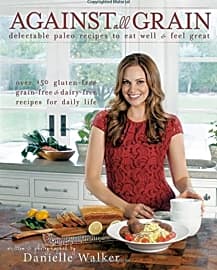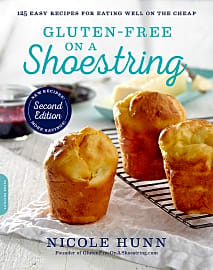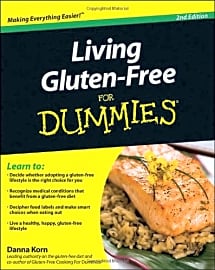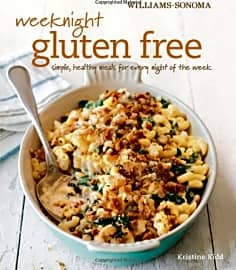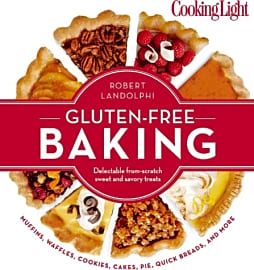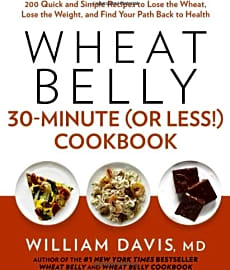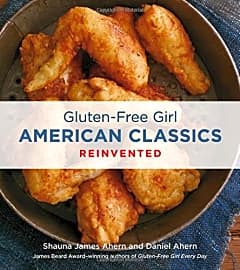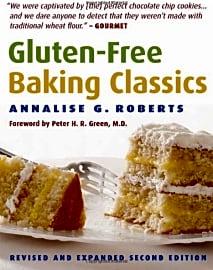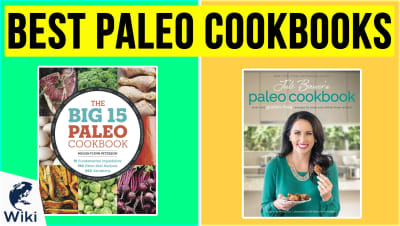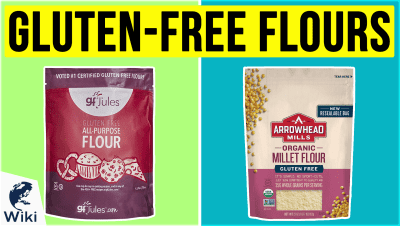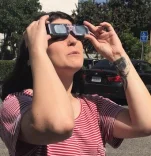The 10 Best Gluten Free Cookbooks

This wiki has been updated 41 times since it was first published in September of 2015. Whether you have celiac disease, a wheat allergy, an autoimmune disorder, or other reasons for contemplating the GF lifestyle, these gluten-free cookbooks will give you all the information and meal plans you need to still eat delicious foods daily without the risk of damaging your health. We've included editions good for people on a budget as well as some containing more elaborate recipes. When users buy our independently chosen editorial recommendations, we may earn commissions to help fund the Wiki.
Editor's Notes
July 19, 2019:
Our latest update saw the removal of Gloriously Gluten-Free and Gluten Is My Bitch in place of Eat Happy and Gluten-Free Artisan Bread. The former two books have nothing inherently wrong with them and are still great cookbooks, but we felt Eat Happy, which is a favorite among thousands of foodies was more compelling than Gluten Is My Bitch, which is more of a lifestyle book and has fewer recipes than many others.
Regarding Gluten-Free Artisan Bread, we felt that a book that advised those who eat a GF diet on how to make fluffy, crusty loaves of bread might make its way into the average consumer's daily rotation more than a tome packed with international dishes (even if they are delicious).
We also updated the popular Gluten-Free on a Shoestring to its revised and updated second edition. This selection remains in the top three thanks to its thrifty guidance, excellent recipes, and clear writing style.
Because GF eating and the paleo diet go hand in hand, we elevated Against All Grain to the number two spot. When paired with a good paleo cookbook, a home chef can easily knock up an endless amount of diverse, tasty meals for the entire family.
Eat Happy made it to the #1 spot because it is thorough, relatable, and genuinely concerned with the reader's well-being, serving as a guide to a joyful lifestyle. It includes helpful shopping lists and gives some background on the gluten-free flours it touts, which can help lay a foundation for cooks who would like to use them later on, sans recipe.
Going Gluten-Free; Staying Gourmet
For most of us, though, the best place to start gluten-free cooking is with a general-purpose cookbook.
If you hope to cut gluten out of your diet without cutting taste and nutrition out of your life, you are living in the right era. Just a decade or so ago, avoiding gluten meant painstaking research of any processed product and/or preparing all of your own foods using whole ingredients guaranteed to be free of wheat, rye, or barley derivatives.
Today, thanks to the gluten-free movement that has swept across America and much of the globe in recent years, it is easier than ever to find myriad gluten-free options on menus, in grocery store aisles, and in the kitchens of friends and family members, too. It's also pleasantly simple to find a fine gluten-free cookbook.
In fact, non-gluten cooking has become so commonplace that you will even find plenty of specialty cookbooks that suit the aspiring pastry chef, the specialist in a given cuisine, and so forth. For most of us, though, the best place to start gluten-free cooking is with a general-purpose cookbook.
Consider first a gluten-free cookbook that focuses on easy "everyday" meals just like you would prepare were you not avoiding certain grains and grain-based products. Many such books focus on recipes that can be completed in short periods of time (a meal that is ready in a half hour or less tends to be the gold standard) or on dishes that can be cooked using only a few simple ingredients. These types of books can help both the new chef and the new-to-gluten-free chef obtain a foundational knowledge upon which he or she can later build, adding their own twists, updates, and substitutions.
This basic cooking is an important step even for the chef with a good deal of experience, for many foods used as substitutions for those containing gluten don't handle in quite the same way (wheat flour and rice flour mix and bake slightly differently, for example), and thus some un-learning and re-learning might be needed.
Once you are generally comfortable cooking without gluten, by all means delve into gourmet cooking, such as baking pies or pastries, tackling classic meals reimagined without gluten, or by mastering Italian, Indian, or other cuisines using substituted ingredients. (Do make sure to account for any nutrients you might sacrifice in the abandoning of grains and supplement your diet as needed with other foods and/or vitamins.)
What Is Gluten, Anyway?
Gluten is made up of a blend of naturally-occurring proteins, which are themselves molecules formed by amino acids, the basic building blocks behind organic life. Gluten can be found in a number of grains, with rye, oat, wheat, and barley being the most commonly cultivated for human and animal consumption.
The word gluten is derived from a Latin word meaning glue, and indeed it is as a sort of bonding agent that gluten acts. The proteins hold together the ground-up grains used to create dough that are then used in the making of everything from bread to cakes to biscuits to waffles and so forth. Gluten helps dough to rise evenly while maintaining its shape and elasticity, giving breads and pastries their pleasant chewiness. (The more dough is kneaded, the more linking strands gluten can form, thereby creating signature breads such as those used for pizza crusts or bagels.)
This protein group provides the distinct texture of pasta, the crunch of a baguette, and the fluffiness of a croissant. Unfortunately, it is also deleterious for a small number of humans.
Do You Really Need To Go Gluten-Free?
Only those afflicted with a few recognized conditions truly need to cut gluten out of their lives for medical purposes and/or for marked quality of life issues. First and foremost, if you have been diagnosed with Celiac Disease, then you absolutely must avoid gluten. Those with this disorder can experience actual damage to the lining of the small intestine that is both painful and which inhibits proper absorption of nutrients. No amount of gluten is safe for Celiac patients, which experts estimate number at slightly below one percent of the population (many thus afflicted are undiagnosed -- your concern merits the attention of a doctor if you think you may be among those ranks).
Those with this disorder can experience actual damage to the lining of the small intestine that is both painful and which inhibits proper absorption of nutrients.
Many more people feel that they may have a gluten sensitivity, which is now so common a "condition" as to often be abbreviated as GS. While some evidence does support the existence of non-Celiac GS (or NCGS), only in those who experience distinct symptoms such as acute abdominal pain and irregular bowel movements directly following the ingestion of foods rich in gluten are likely effected by an actual sensitivity. Many people who may simply have generally sensitive digestive systems or other issues, such as IBS, a food allergy, or another condition attribute their troubles to gluten.
So why has the gluten-free movement grown so prominent? Much of the current gluten-free fad is based more on the greed of advertisers than on any actual health and wellness foundation. A trip to any grocery store or pharmacy will reveal dozens of items suddenly emblazoned with proud Gluten Free badges despite the fact that no one would ever have suspected the products to contain the protein in the first place. Certain brands of cough drops, carbonated waters, and hand soaps are among the most obvious offenders of marketing devoid of logic.
If you have gone gluten-free and found it made you feel better despite never having been diagnosed as a Celiac patient or as possessing a genuine sensitivity to wheat, rye, or barley products, chances are your new gluten-free diet is simply part of a more thoughtful, generally healthy approach to life. Consider letting gluten back in while still avoiding unhealthy foods (overly processed, sugary, or salty foods, e.g.) and while still following a generally healthier lifestyle. Keep in mind that while Celiac disease is a genuine issue for about one in 133 people, the rest of us can almost assuredly keep eating grains just as human have done for well over 11,000 years at least.


